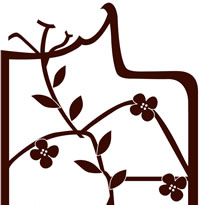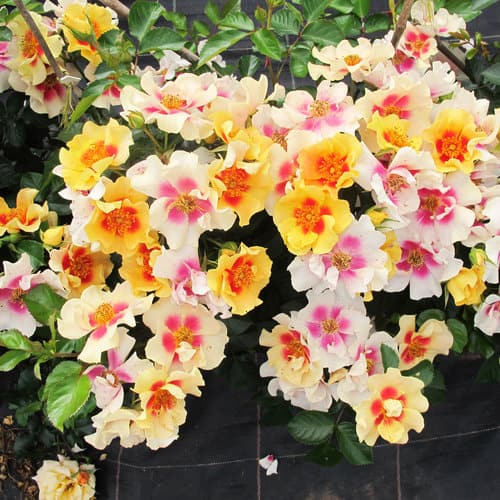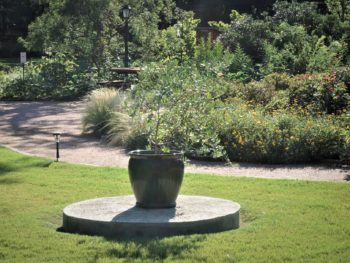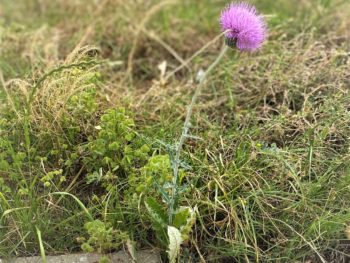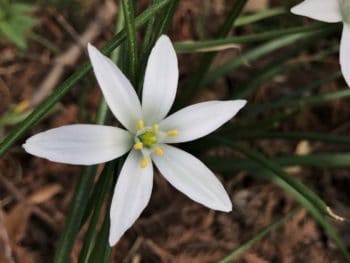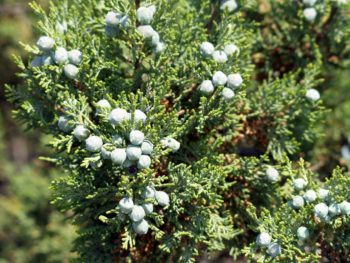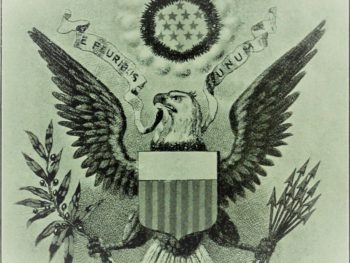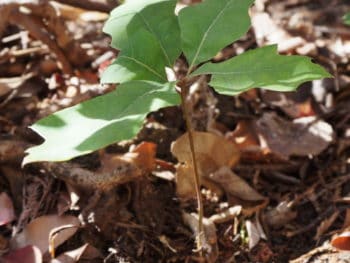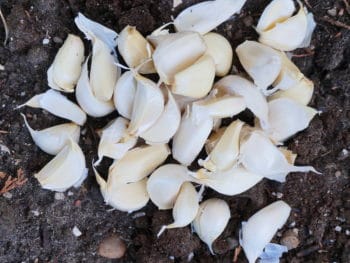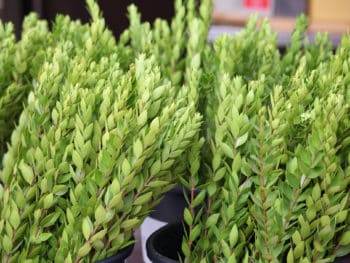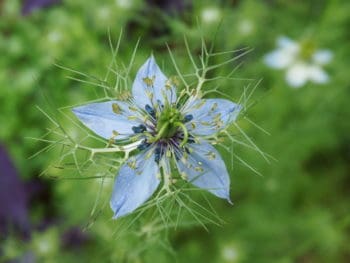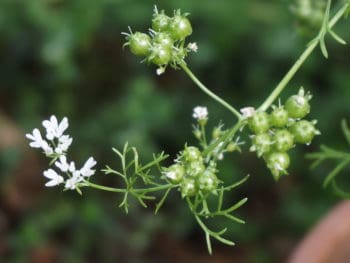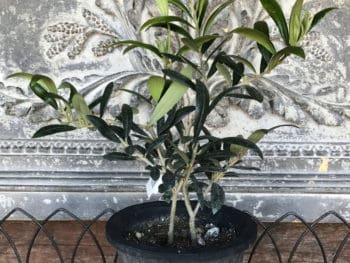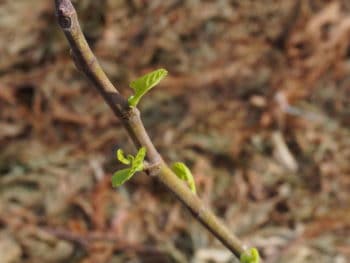This just in from the GardenComm Annual Conference & Expo: The Ringo™ Rose, Rosa x, an up-and-coming, patented cultivar marketed by Proven Winners. Upon learning of the latest plants as we garden communicators assembled last month, I was instantly smitten with the cheery flowers covering this new rosebush and its continual blooming. Impish joy abounds while gazing upon this precious plant, a fun, whimsical addition to garden beds or patio pots. Meander with me to see this new plant connect to an old story from God’s Word, and discover a hidden rose with a flourish of poetic twist.
Ringo™ Rose
Ringo’s™ petals first appear in bright, mustard yellow, with a deep, reddish marking at their center, setting apart the classic, central golden tuft of stamens that characterizes Rosaceae blossoms with contrast and dazzle. As the days go by, their color transforms, fading from yellow to warm white, the centers becoming vivid pink.

Meanwhile, this perpetual bloomer displays new mustard yellows, so that the changing hues are side-by-side, covering the shrub in a coat of color—the effect is spectacular, a refreshing view to behold, an age-old garden rose all dressed up!
Joseph’s Coat
Naturally, I am always seeking a connection between garden plants and God’s Word, so that our gardens become true sanctuaries, places to pursue the presence and the story of the Lord. Soon a balmy chuckle burst in my heart in what a “colorful coat” the Ringo™ rose was clothed in—
Now Israel loved Joseph more than all his children, because he was the son of his old age: and he made him a coat of many colours.
Genesis 37:3 KJV
The fanciful flowering shrub called my mind and heart to the story of Joseph. The joy this son brought to his father was expressed in colorful costume.
The father of a righteous child has great joy; a man who fathers a wise son rejoices in him.
Proverbs 23:24 NIV
Joseph’s coat actually put him into a death-defying struggle with his brothers, yet they had no idea how this wise son would become a great savior to their family and bring them all together in rejoicing embrace.
Discover a Hidden Rose
Coincidentally (or not!), Joseph’s story is bedecked by a kind of old “rose” plant, the rockrose, that is. As mentioned, the young boy’s colorful coat epitomized the jealous rift between him and his older brothers, who sold him into slavery and brought the coat back to their father, blood-stained (Genesis 37:31). With this evidence, Jacob, their father, was convinced of Joseph’s disappearance and probable death, and everyone thought that was the end of that (v. 35).
In reality, the brothers had cashed in the boy to a caravan of commodities traders headed to Egypt, carrying loads of perfumed ingredients, rockrose resin among them (usually mistranslated as “myrrh” in this story).
And they sat down to eat bread: and they lifted up their eyes and looked, and, behold, a company of Ishmeelites came from Gilead with their camels bearing spicery and balm and myrrh [rockrose resin], going to carry it down to Egypt.
Gen 37:25 KJV
Rockrose, Cistus salviifolius, is a wild shrub found on the sunny hillsides of Israel and across the Mediterranean. Rockroses bear flowers that have a tousled, rose-looking form: a central, bright golden tuft of stamens cupped by a single layer of saucer-style petals.

Some Cistus species also have deep red markings surrounding the center, similar to the new Ringo™ rose. The blooms last only a day, however, unlike Ringo’s™ lingering blossoms.
The leaves and stems of Cistus genus plants yield a sticky resin with an entrancing, balsam-like scent used in making perfumes, a substance widely traded in ancient times. With rosy-flowered appearance and distinctive aroma, it is no wonder this woodland shrub borrows its name from the long-loved rose bush, despite the fact that the two plant types are not botanically related, nor are Rosa species generally considered among plants of the Bible.
Click to learn more about Rockrose in the Garden in Delight Plant Guide
Back to Joseph’s Story
Rockrose returns in the story of Joseph’s life as he makes a surprising plot twist: from sold-as-slave to trusted steward of Egypt’s empire.
So Pharaoh said to Joseph, “I hereby put you in charge of the whole land of Egypt.” Then Pharaoh took his signet ring from his finger and put it on Joseph’s finger. He dressed him in robes of fine linen and put a gold chain around his neck.
Genesis 41:41-42 NIV
Joseph was ultimately dressed up again! He was passed along from caravan to household slave to head of household; from prisoner to warden’s second in command; and finally from dream interpreter to lord of Pharaoh’s entire household and all of Egypt. As empire executive, he saw to it that crops were properly stored and saved, with Divine insight of looming famine. The famine brought a certain band of brothers to the foot of his throne, pleading for favor with gifts from their neighboring land, including guess what? Rockrose fragrance:
“…Put some of the best products of the land in your bags and take them down to the man as a gift—a little balm and a little honey, some spices and myrrh [rockrose resin], some pistachio nuts and almonds.”
Genesis 43:11 NIV
Rockrose plays a background role, a subtle, horticultural hint of the fragrant aroma of forgiveness that perfumes and permeates Joseph’s story. At long last, he revealed himself to his desperate family, granted the gracious favor they hardly managed to hope for, and much more: He prepared a feast (Genesis 43:23-34), and a new home for them (Genesis 45:16-18)—patterns resounding in Messiah’s life, our Great Savior Jesus Christ.
“The Lord lives! Praise be to my Rock! Exalted be my God, the Rock, my Savior!
2 Samuel 22:3 NIV
Whether planting the Biblical rockrose, or welcoming the new Ringo™ rose to your garden, may the dazzling details of God’s salvation story always fill your heart.
R is for Rockrose
A plant this pivotal deserves a poem! What better way to be infused with the epic movement of the Lord through Joseph’s story than to read it in rhyme and meter. Rockrose joins the Garden in Delight A-to-Z Primer of Plants from God’s Word.

is for rockrose
Latin name, Cistus;
its rose-looking flowers
are here to assist us.
Rockrose hides in God’s Word
in bee-hind the scenes blur:
This modest, woody shrub,
mistranslated as “myrrh,”
is hardy—flowering hillsides
ideal for water-wise gardens,
attracting our attention
to God’s gracious pardon.
Native to Israel,
cistus yields sticky resin
from its leaves and stems,
stirring fragrance from heaven.
It was gathered offerings
and rockrose’s perfumery gift
that Jacob sent from his dry land
to Egypt’s royal leadership,
pleading for help in
rainlessness casuing famine.
Would Israel’s best-of-the-land
products win favor for them?
First, more on rockrose:
sage-like leaves evergreen,
flowers pink or white,
gracing the land by late spring.
Forage for goats
and pollen-saucers for bees,
this milk-and-honey plant
helped supply God’s guarantee:
The land-promised would be flowing,
their flourish implied.
Abraham’s offspring
would be multiplied,
despite jealousy, struggles,
and siblings’ rivalries,
like the brothers who sold
youngest Joseph to slavery
in scent-trader’s caravan.
Where would he end up?
Amongst balm and rockrose resin:
Wait for this salvation cup!
Joseph, sold again, to
Egypt’s captain of the guard,
later thrown into prison
where he rose up to take charge.
An astute steward,
Joseph was forever God-fearing,
a cup-bearer’s witness of
his dream-insight steering
him on to Pharaoh’s palace,
given command of the kingdom.
Plentiful crops stored soundly
at his direction and wisdom.
And so Joseph, ensnared by
his brothers’ evil plot,
turns out to be the one
granting good food for the lot.
For the bags of Israel’s best
came to Joseph to be presented.
He saved lives from starvation
because he had no resentment.
Forgiveness was his way,
and he embraced family long-lost,
spreading sweet aroma—reconciling,
not counting the cost.
Rockrose in the background,
unassuming in this story,
points to the Rock of Israel
and the details in God’s glory.
Joseph patterns Jesus,
the Messiah who was to come.
Forgiveness from the throne,
scented grace of the Risen One.
Linger in Israel’s forests—
smell pine, cistus, and mints
as the heat of the day releases;
and sun’s long rays add radiance.*
Now home to plant rockrose,
savor the bounty of age-old hills;
see the flow of Father’s great blessing
in the land even still.
But thanks be to God, who in the Messiah constantly leads us in a triumphal procession and through us spreads everywhere the fragrance of what it means to know him!
2 Corinthians 2:14 CJB

Credits:
*This stanza taken from the intimate description offered by Dr. Lytton John Musselman in his writing on “Cistus”, Plants of the Bible website hosted by Old Dominion University click here to read, see paragraph beginning, “For me, the most desirable time to visit Dibbeen is…”
Many thanks to Proven Winners for their sponsorship of GardenComm, Garden Communcators International, visit www.gardencomm.org for conference information
For more on Ringo™ Rose, visit www.provenwinners.com/plants/rosa/ringo-rose-rosa-x and look for this cheery cultivar in garden centers next spring

For more on Ringo™ Rose, visit www.provenwinners.com/plants/rosa/ringo-rose-rosa-x and look for this cheery cultivar in garden centers next spring
Photo Credits:
© 2019 Proven Winners, LLC for all Ringo™ Rose images
© 2017 Shelley S. Cramm Cistus flower blooms on my first attempt to grow this plant – still a work in progress! Gave it too much shade
© 2019 Shelley S. Cramm “R” Drop Cap sketch
© Goldenhind | Dreamstime.com Sageleaf rock rose blooming in the light sunny day in the garden, Cistus salviifolius evergreen plant
Find rockrose in God's Word for Gardeners Bible featured in the Promised Land landscape "Lay of the Land - Native Plants," page 223, part of the Garden Tour section
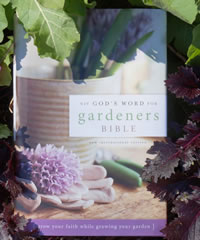
Learn more about growing rockrose in your home garden in our Plant Guide:
gardenndelight.wpengine.com/plant-guide/rockrose/
